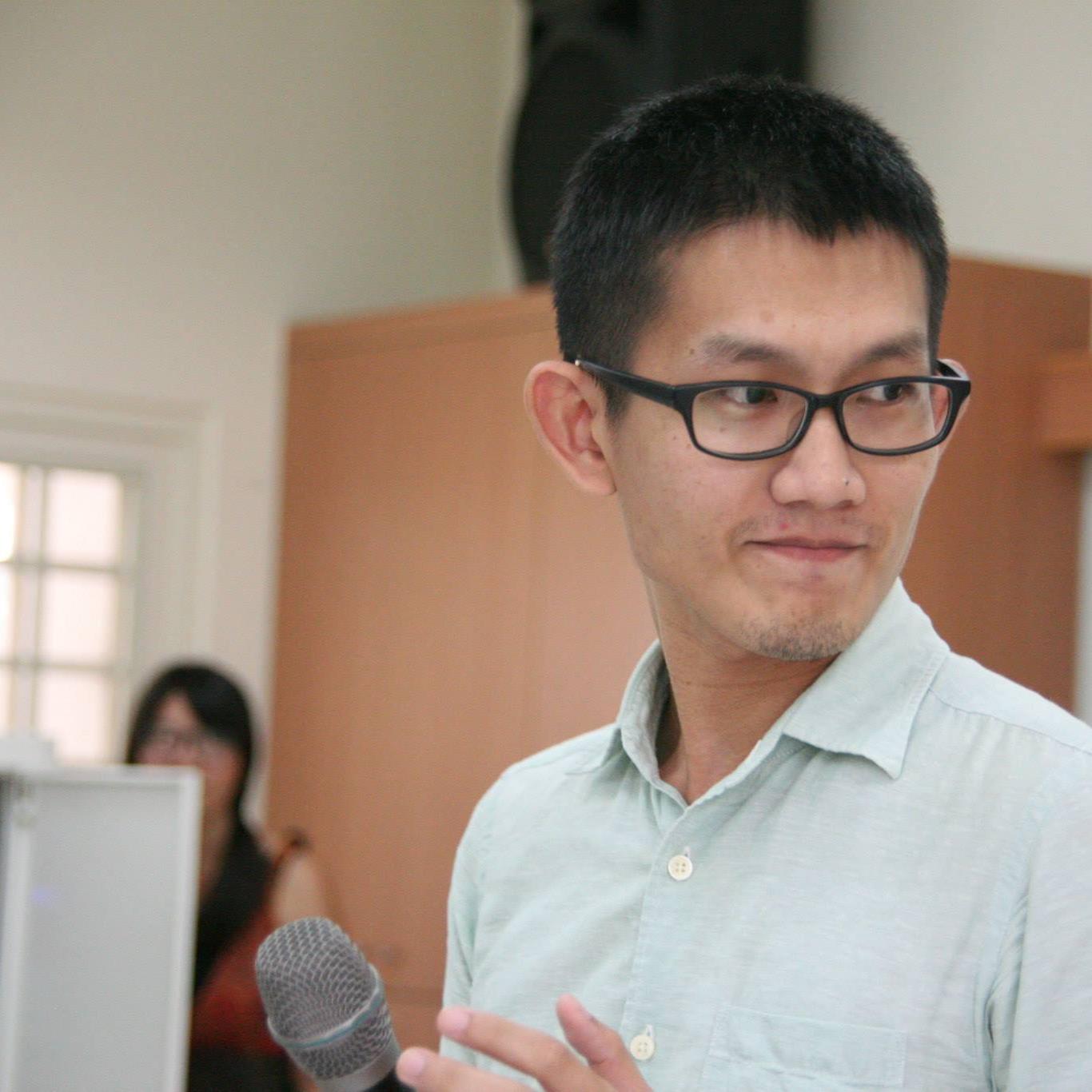Tsang-Kai Chang
E-mail: tsangkaichang[at]ucla[dot]edu
Tsang-Kai received his B.S. and M.S. degrees in Electrical Engineering from National Taiwan University in 2012 and 2014, respectively. Currently, Tsang-Kai is a Ph.D. student in UCLA.
His research interest includes visual-inertial system, multiagent system, and stochastic modeling.
Research
computational spatial autonomy and SLAM
Robots have to establish the spatial awareness autonomously, and then they can perform various amazing tasks. Therefore, the spatial autonomy is crucial to all robotic applications. This problem is usally coined as the simultaneous localization and mapping (SLAM) in robotics, and has been actively studied for several decades. Most of the SLAM solutions rely on optimization-based approaches, which result in the offline nature. I take advantage of the intrisic hidden Markov model in SLAM problems, and design an online SLAM algorithm. As a result, the proposed algorithm is very efficient compared to the common approaches.
artificial agents vs biological agents
I am interested in spatial autonomy principles underlying both artificial and biological agents. Even though I normally approach the robotic autonomy from an engineering perspective, the discovery in neuroscience may be also insightful for understanding and designing robots. For example, mammals track a 2D position with only circular representation. I expect to explore the connection among all autonomous agents.
multiagent systems
By cooperation, multiple agents provide more flexibility and robustness over a single agent. However, the information management in a multiagetn system is essential but challenging. Following this concept, I stuty the cooperative localization in multirobot systems. Our algorithm is the first one that has separate communication step and observation step, which greatly improves the system resilience.
consensus as barycenter of distributions
Barycenter is an elegant concept to denote the weighted average. By using the KL divergence as the distance measure, we can find the barycenter as the consensus of several probability distributions. The KL barycenter has several interesting properties; for example, the KL barycenter can be considered as an conservative fusion result. I study the KL barycenter of von Mises-Fisher distributions, which are extensively used in directional data. I show that the KL barycenter is nothing but vector addition in the Euclidean space.
Publications
Journal publications
-
T.-K. Chang and A. Mehta, “Control-Theoretical and Topological Analysis of Covariance Intersection based Distributed Kalman Filter,” IEEE Control Systems Letters, 2018. [IEEE Xplore]
-
T.-K. Chang and A. Mehta, “Optimal Scheduling for Resource-Constrained Multirobot Cooperative Localization,” IEEE Robotics and Automation Letters, vol. 3, no. 3, pp. 1552 - 1559, July 2018. [IEEE Xplore]
Conference proceedings
-
T.-K. Chang, S. Chen, and A. Mehta, “Multirobot Cooperative Localization Algorithm with Explicit Communication and its Topology Analysis,” in 2017 International Symposium on Robotic and Research (ISRR), Dec. 2017.
-
T.-K. Chang, K.-C. Chen and L. Zheng, "Time Dynamics of Random Access in Cognitive Radio Networks," in Proceedings of 2014 International Conference on Communications (ICC), June 2014. [IEEE Xplore]
Current Project Proposal
Blog posts
- 11/30/2021 : Distributed optimization
- 10/18/2021 : Initial reply to DARPA YFA
- 10/11/2021 : Some draft ideas on the communication of multirobot system
- 10/05/2021 : Related NSF programs
- 08/09/2021 : SLAM simulation with sliding window scheme
- 07/15/2021 : BOEM SLAM simulation of expanding window
- 06/10/2021 : The simulation of BOEM SLAM algorithm
- 06/03/2021 : SLAM performance on EuRoC datasets
- 05/07/2021 : Tests on the modules of optimization problems
- 04/29/2021 : EM SLAM on EuRoC dataset
- 04/07/2021 : von Mises-Fisher distributions in machine learning
- 02/04/2021 : Comparison between optimization based and EM based SLAM
- 01/13/2021 : Finish optimization-based SLAM and start working on EM SLAM
- 12/14/2020 : Nonlinear least squares optimization in SLAM
- 12/07/2020 : SLAM frontend overview
- 11/30/2020 : Research plan for Dec. 2020
- 10/26/2020 : Some lessons from implementing optimization over SO(3)
- 10/19/2020 : Overview of okvis
- 10/12/2020 : Dead reckoning results from preintegrated IMU data
- 09/23/2020 : Combining SLAM frontend and backend
- 09/10/2020 : SLAM algorithms with synthetic data simulation
- 09/10/2020 : Verifying the SLAM backend
- 08/19/2020 : Downscale/implement a SLAM frontend
- 08/06/2020 : Progress on the SLAM project
- 07/30/2020 : Simulation code for localization algorithms with circular representation
- 07/16/2020 : Optimization tools for SLAM problems in Python
- 04/18/2019 : Neuroscience inspired AL
- 03/05/2019 : State representation learning
- 02/06/2019 : Survey on EM SLAM
- 01/29/2019 : Summary of the 1st SLAM study group
- 01/23/2019 : New paper on localization submitted
- 11/15/2018 : Some materials for Lie group
- 07/19/2018 : Decoding position from grid cells
- 04/10/2018 : The consistency of Wasserstein barycenter
- 02/16/2018 : The draft of CDC 2018 is finished
- 02/07/2018 : Try to generalize my current result
- 01/31/2018 : The survey on distributed KF
- 11/30/2017 : Intermittent Observation in Kalman Filtering
- 11/09/2017 : Comments on Diffusion Kalman Filter based on Covariance Intersection
- 11/02/2017 : Similar papers on distributive Kalman filter
- 10/26/2017 : The tool for unobservable multirobot localization system
- 10/19/2017 : An information theoretical based interpretation on covariance intersection
- 10/09/2017 : Survey on Consensus-Type Distributive Estimation
- 08/27/2017 : Optimal Scheduling Problem of Multirobot Localization
- 07/17/2017 : Weekly Update: Paper Review
- 07/07/2017 : Weekly Update
- 06/19/2017 : Multirobot Cooperative Localization Progress
- 05/02/2017 : Lab Open House
- 02/23/2017 : Unprotected left turn at intersection
- 02/23/2017 : Try to Model Urban Intersections
